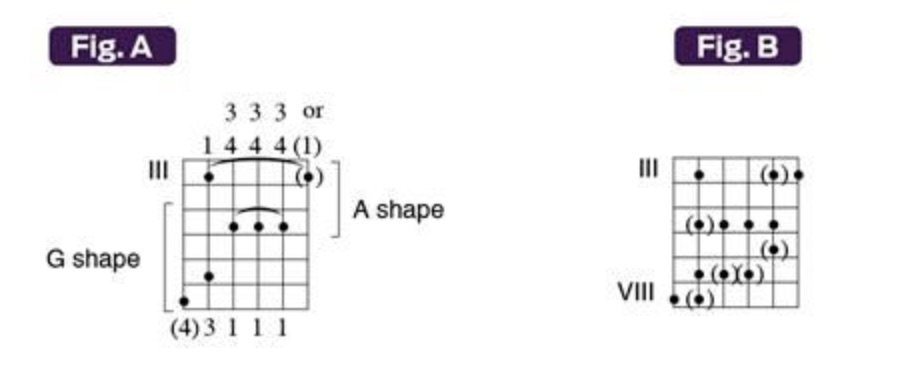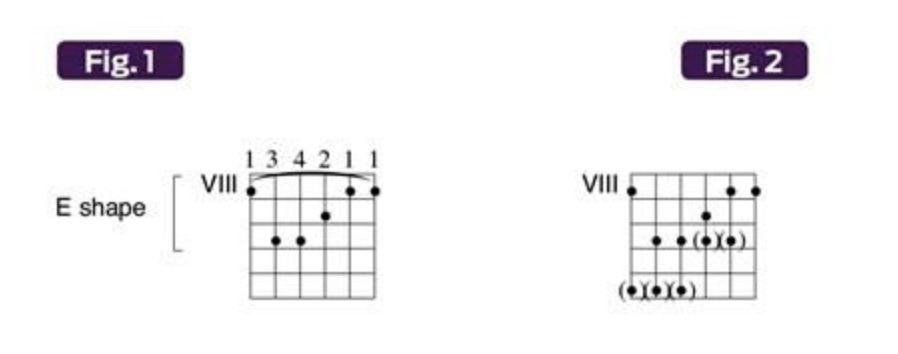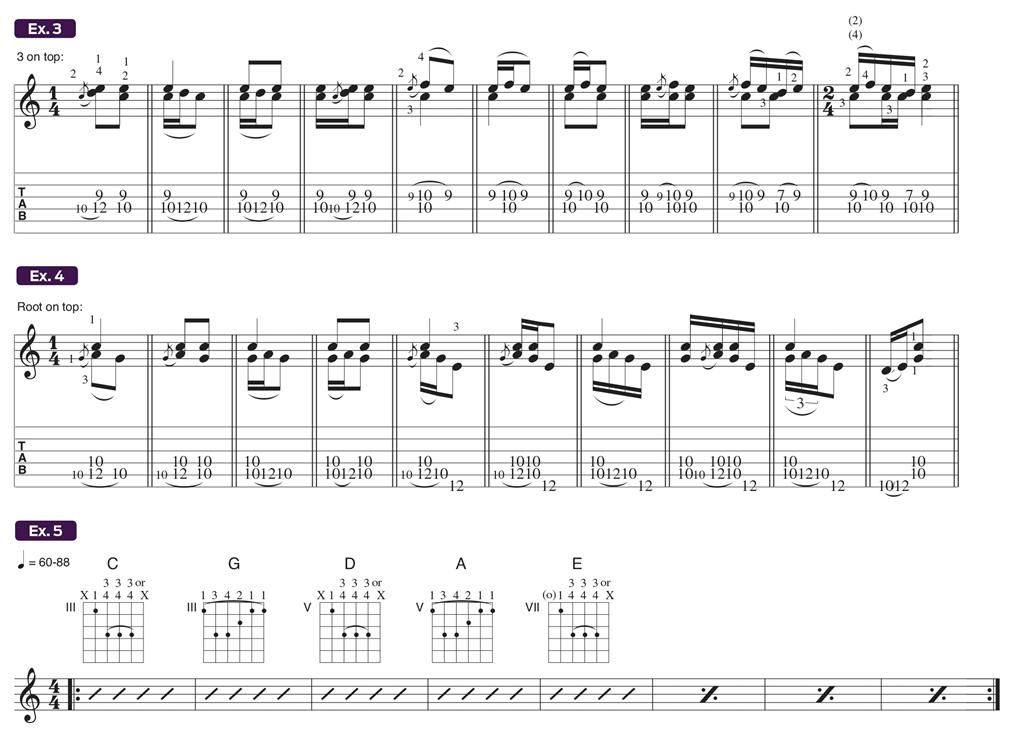80 Ways to Play a C Chord – Jimi Hendrix Style
Demystify some of Hendrix's magical embellishments.

"What would Jimi do?" It's a question I've asked myself countless times over the last four decades, particularly when faced with creating groovy rhythm guitar parts from basic chord charts.
Hendrix didn’t really use a lot of different types of chords, but the vocabulary he created with the ones he knew was astounding, especially on ballads like “Hey Joe,” “The Wind Cries Mary,” “Little Wing,” “Castles Made of Sand,” “Axis: Bold As Love,” and “(Have You Ever Been to) Electric Ladyland.”
Drawing from the soulful guitar moves of Curtis Mayfield and the country piano style of Floyd Cramer, Hendrix developed a unique collection of embellishments and filigrees that allowed him to improvise using dyads, or two-note chordal fragments, decorated with hammer-ons, pull-offs, and slides to play within and around a basic “parental” chord shape.
Take the humble third-position C barre chord. Some might think of it as a finite entity, but in Hendrix’ hands, it became an entire universe.
Figure A puts this transposed “A”-shaped major triad (root on the fifth and third strings) on the grid and shows how it connects to the next highest “G”-shaped C chord (root on the sixth and third strings).
Figure B adds parenthetical diatonic passing tones – the 2, the 4, and the 6 – to the same grid. These are the notes Hendrix used to pair with and weave in and out of the chord tones, and this is your world for the next month.

We begin at the upper end of the chord, with the 5 (G) voiced on top of each dyad.
Example 1 illustrates 10 different ways to hammer-on, pull-off, or slide the 2 and 4 (D and F) in and out of chord tones on the top three strings during a single beat.
Many feature the same notes and rhythms with subtle variations in phrasing. This is a key concept in Hendrix’s style, and the idea is to mix and match these moves into one-bar phrases. For instance, try playing bars 7, 1, 10, and 2 back-to-back. See what I mean? The more moves you learn, the more options you’ll have.

Now that we’ve established a kind of formula, dig into the 10 similar 3-on-top moves shown in Example 2.
Here, we’re mostly hammering and pulling the root and 2 by shifting into the “G”-shaped C chord and concentrating on the second, third, and fourth strings. Get comfy with the moves, and then mix and match them with the ones from Example 1.

Follow suit in Examples 3 and 4, which feature the root and an octave lower 5 on top of each dyad, and you’ll have played circles around that humble C chord 40 different ways!
Finally, pick a nice slow tempo and combine any of the previous 40 ideas while you cruise the four-bar chord progressions in Examples 5a and 5b. Play any C moves as written, transpose them to first position for Bb, sixth position for Eb, eighth position for F, tenth position for G, and eleventh position for Ab, and presto! You’ve been Jimi-fied!

Part 2 – 40 More Hendrix-ian Ways To Play A C Chord
Let's continue exploring Hendrix-style rhythm guitar with another 40 ways to play a C chord!
All of the following motifs are based on the parental eighth-position E shape and its neighboring tones as shown in Figures 1 and 2. Combining these with last month’s A-shaped moves will allow you to stay in the same or a nearby neck position when changing chords, especially those that are a fourth or fifth apart.

We begin with 10 one-beat motifs featuring the root on top. Like its A-shaped counterparts, Example 1 illustrates a variety of hammer-on- and pull-off-based moves perfectly suited for Jimi-style ballads and slow to medium tempo R&B grooves.
Compare them with last month’s third-position, root-on-top motifs and observe the similarities and subtle differences. Try playing the full (or partial) chord first, and then follow it up with your motif(s) of choice.

The drill remains the same from here on, as we progress through each lower string group to explore similar motifs voiced with the 5 (G) on top in Example 2, the 3 (E) on top in Example 3, and an octave-lower root on top in Example 4.

Once you’ve internalized all 40 motifs in every key, start mixing and matching them with last month’s A-shaped ones as you play through the cycle-of-fifths sample progression shown in Example 5.
Think “Hey Joe,” and use A-shaped fills for C, D, and E, and E-shaped fills for G and A. (For extra credit, reverse this rule.) Vary the rhythms, phrasing, and embellishments according to taste and have a ball, Jimi-style!

Get The Pick Newsletter
All the latest guitar news, interviews, lessons, reviews, deals and more, direct to your inbox!
“Write for five minutes a day. I mean, who can’t manage that?” Mike Stern's top five guitar tips include one simple fix to help you develop your personal guitar style
"It’s like you’re making a statement. And you never know where it’ll lead." Pete Thorn shares the tip that convinced Joe Satriani he was the right guitarist for the SatchVai Band










